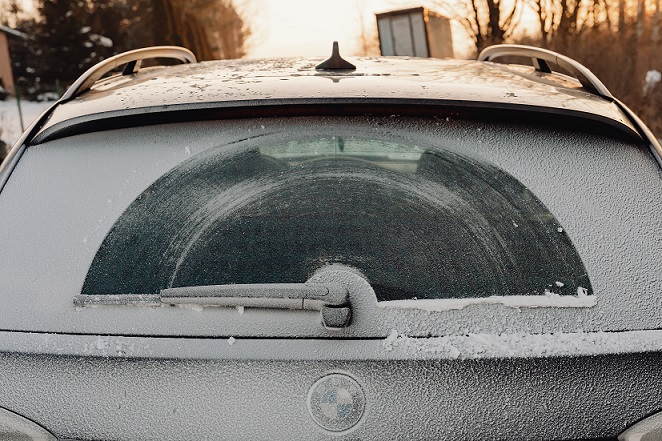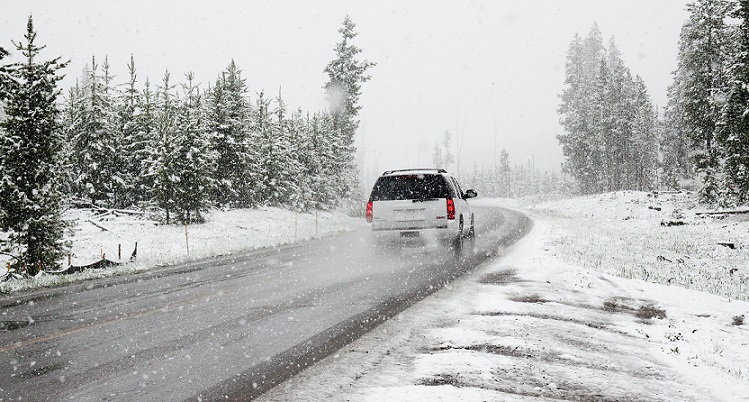Driving an EV in Cold Weather
Here is the Tips on How to Drive an EV in Cold Weather and Snow
As seasons change and temperatures drop, there are a few things to know about driving an electric vehicle in cold weather and snow. When the roads are covered with ice and snow, drivers must be very careful behind the wheel, as around 20% of accidents occur in winter. EV in Cold Weather
In addition to increased safety risks, cold weather poses efficiency problems for electric car owners. If the temperature drops below 40 degrees, an electric car battery produces less electricity. If the battery is insufficiently charged, it can be almost completely discharged in a few hours in cold weather.
If it falls below 20 degrees, it can make a significant dent in the EV area. Driving and using your car’s heating system at or below this temperature reduces the average range of an electric vehicle by up to 40%. Therefore, it is essential that drivers living in colder regions take the necessary protective measures in winter. EV in Cold Weather
If you drive an electric car and charge it at home, there are ways to mitigate the problems that come with harsh winter conditions.
Maintain your own personal safety and an energy efficient electric vehicle by taking care of the mentioned points:
// Tips on How to Drive an EV in Cold Weather and Snow
1. Be careful of the speed you are driving at | EV in Cold Weather
There are two reasons why you shouldn’t drive fast in winter. For starters, higher speeds force the battery to work harder, which takes away more range. As mentioned above, saving battery power is especially important in cold weather. To stay efficient, avoid highway driving whenever possible, but if necessary, try to keep your speed below 100 mph.
Second, the conditions are more complicated. Roads might be slippery and the driver’s field of vision can be blocked by rain, snow, or fog, increasing the possibility of the driver losing control of the vehicle and having an accident.
2. Maintenance of car | EV in Cold Weather
Another proven method to avoid losing autonomy in winter is preconditioning. With your car plugged in, you can start heating up the battery so it doesn’t get cold when you start. This system can also increase the temperature inside your car, making cold morning trips more bearable. Since your car is heated by power from a charger, you can save battery power for driving.
Many electric vehicle models have an app or a key fob that allows you to start preconditioning remotely. You can also set recurring departure times so the car knows when to warm up.
3. Keeping the battery warm | EV in Cold Weather
Electric vehicle batteries have to work harder in the cold, so they drain quickly in extreme temperatures. When you start your car after a long chilled night, the battery consumes more energy compared to normal in order to warm up, which means less energy is consumed to drive it.
To avoid a power outage, be sure to plug in your mobility device as much as possible. According to Wired, your battery should always be charged to at least 20% in winter. Other ways to keep the battery warm are to remove ice and snow from your car and park it in the sun whenever possible.
4. Health of tires need to be tracked regularly | EV in Cold Weather
While all-season tires are a convenient option for many, certain electric vehicle drivers benefit from tires designed for winter conditions. If you live in an area where there are frequent low temperatures, then equipping your car with winter tires will help one ensure extra safety and efficiency.
This advice applies to all vehicles that use inflated tires, but electric vehicles can be more affected by low tire pressures. Every 10 degree drop in ambient temperature can reduce tire pressure by one pound per square inch (PSI). The colder it is, the lower the PSI of your tire.
A recent ExxonMobil study showed that maintaining optimal air pressure is critical for electric vehicles in order to maximize the full potential of their battery range. The correct pressure can increase the energy efficiency of the vehicle by 3% to 7%.
Remember that electric cars are usually quite heavy, making it difficult to drive in slippery conditions. Winter tires give you maximum grip when driving on snow-covered roads so you don’t have to worry about turning or getting stuck.
5. Drive in Eco Mode | EV in Cold Weather
The Eco mode for each EV varies, but all achieve a similar goal of increasing mileage through lower power consumption by limiting the amount of power delivered to the propulsion engine and cabin heaters. This can help maximize battery efficiency in cold weather.
Additionally, most EVs accelerate slightly slower in Eco mode because engine power is reduced. This can make your driving safer by limiting the possibility of wheelspin on icy or snow-covered roads.
Are Plug-in (PHEV) hybrid vehicles leading to a new dieselgate?
6. Pay attention on the charging pattern | EV in Cold Weather
Think ahead and plan when you will need the most load for your car. If you have to go to work early and the temperature drops below 40 degrees at night, set the overnight charge to stop as soon as possible when you need to go instead of charging the night before.
7. Heating of seats | EV in Cold Weather
Since electric cars do not have a gasoline engine, there is no additional waste heat to heat the car’s cabin, unlike conventional vehicles.
A good way to avoid this is to precondition the cabin (as mentioned above), then when it’s time to drive, lower the cabin heater and use the heated seats and steering wheel instead. This keeps the battery more efficient and consumes less energy than heating the entire cabin.
8. While buying an electric car consider one with a heat pump | EV in Cold Weather
Heat pumps consume less electricity than conventional air conditioning systems and are therefore especially useful in winter. Heat pumps work by absorbing heat present in the atmosphere and compressing it using a refrigerant circuit. This exchange increases the heat in the cabin, which causes hot air to enter the car. Without consuming battery power and reducing range, a heat pump system will raise the temperature in your car, making it a more efficient option in cold weather. EV in Cold Weather
Most EV owners find that these practices become second nature and enjoy running their EVs all year long. However, if you live in a single-car household and don’t feel like planning more road trips in the winter, you may be happier with a plug-in hybrid EV model that can run on gas when needed.
Automakers and battery designers are working on a brand new battery chemistries and vehicle systems that promises more range and less impact from colder temperatures. These problems are expected to decrease as these developments are incorporated into future electric vehicles.




